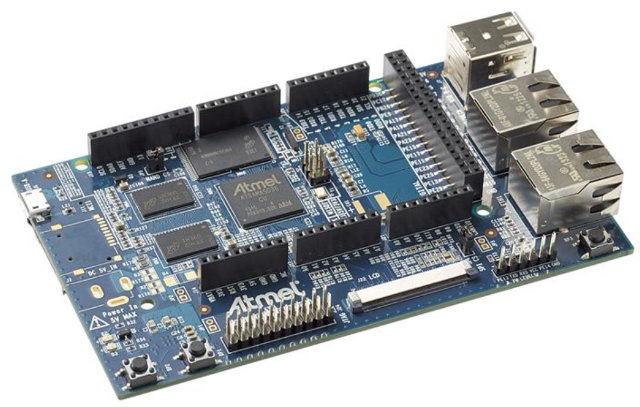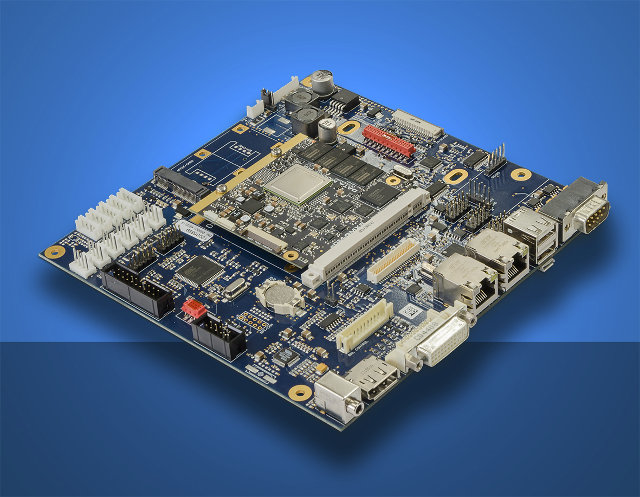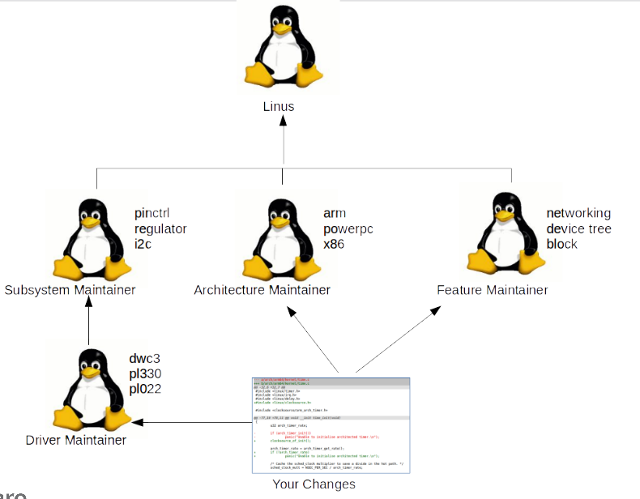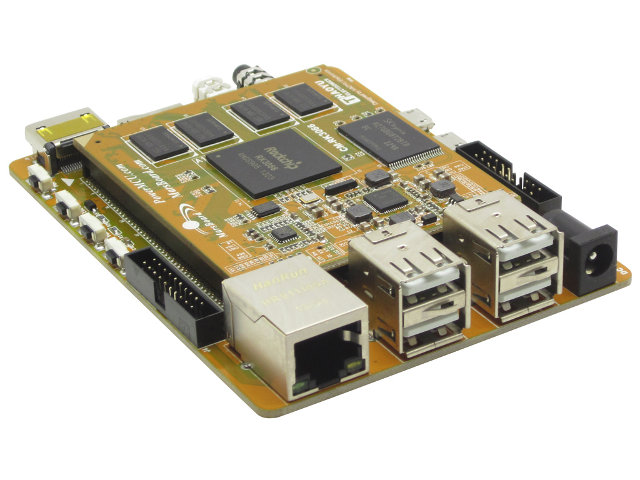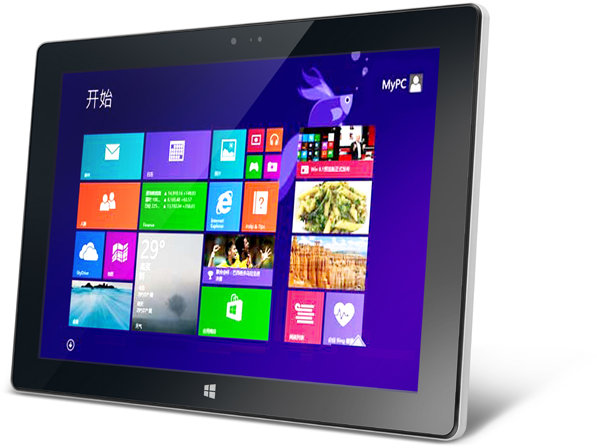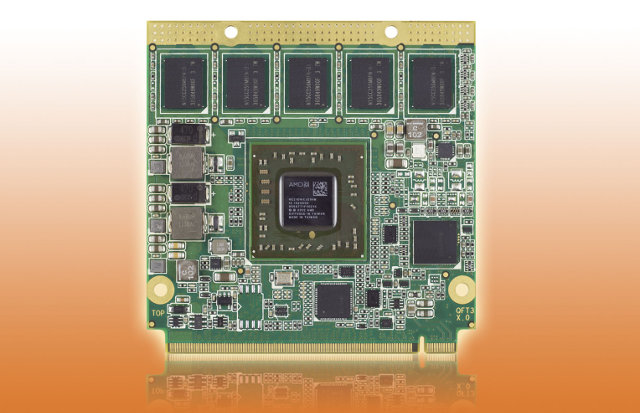A few days ago, at Embedded World 2014, Atmel has unveiled ATSAMA5D3 Xplained evaluation board based on SAMA5D36 ARM Cortex A5 micro-processor with 256 MB DDR2, 256 MB flash and numerous ports and expansion connectors, that targets industrial automation, networks, robotics, control panels and wearable applications. Atmel is one of the rare companies that provides support for the latest long term kernel (3.10) and mainline for their embedded solutions, and their latest board is fully open source hardware. Let’s have a look at the board specifications: MPU – Atmel SAMA5D36 Cortex-A5 Microprocessor @ 536 MHz System Memory – 2GBit DDR2 (Micron) Storage – 2GBit Flash (Micron), SD/MMCPlus 8-bit Card slot, 1x Micro SD Card 4-bit slot footprint (meaning not soldered) Connectivity – 1x Ethernet 10/100/1000M, 1x Ethernet 10/100M USB – 1x micro USB Device connector, 2x USB Host connectors Debugging – 1x 6-lead 3V3-level serial port, 10-pin J-TAG connector Expansion […]
DATA MODUL mini-ITX Board Supports Freescale i.MX6 & Intel Bay Trail-I QSeven Modules
DATA MODUL, a specialist supplier of display technology, has recently unveiled eDM-mITX-CB-Q7-Info, a mini-ITX Baseboard for ARM & x86 Qseven modules optimized to drive large panels for digital signage applications. In theory, the board should support any Qseven modules, but for now only Data Modul’s Freescale i.MX6, and Congatec conga-QA3 Intel Atom E3800 series modules have been optimized and officially certified to work with the motherboard. Precisely, the board is optimized and certified for the following modules: DATA MODUL ARM Qseven SoMs: eDM-QMX6 (i.MX6Quad) eDM-DMX6 (i.MX6Dual) eDM-DLMX6 (i.MX6Dual lite) Congatec x86 Qseven SoMs: Conga-QA3 with Atom E3845 (Quad core) Conga-QA3 with Atom E382x (Dual core). Three models: Atom E3827, E3826 or E3825. Conga-QA3 with Atom E3815 (Single core) You may have heard about EDM, a competing module standard, previously, but the eDM prefix in the ARM modules or the mini-ITX board names has nothing to do with this standard, as […]
Linux Kernel Upstreaming How-To – Linaro Connect Asia 2014
I’ve already written a post about submitting kernel patches to mainline based on a 2011 presentation by Greg Kroah-Hartman, but Matt Porter, Broadcom Landing Team (LT) Technical Lead at Linaro, has given two updated talks entitled “Upstreaming 101” and “Upstreaming 201” at Linaro Connect Asia 2014. There are many planned talked during LCA 2014, and you can get the list as well as links to presentation and videos, as they become available on LCA 14 resources page. The first session “Upstream 101” starts with some definitions such as “upstreaming” (basically getting your code to kernel.org), “mainline”, etc, explains how to get information about the (912) maintainers (tip: it’s in the MAINTAINERS file), how to deal with the 2-week merge windows occurring every 10 weeks or so, but the bulk of the talk detailing the work flow required to upstream code to the Linux kernel. There are basically 5 steps: Preparation – Read […]
$60 MarsBoard RK3066 (Partially) Open Source Hardware Development Board Supports Android & PicUntu
Until now if you wanted a low cost Rockchip development board you’d have to go with Radxa Rock (Quad core RK3188) or WaxBerry Pi2 (Dual core RK3066). Thanks to Haoyu Electronics , the company who made MarsBoard A10, there’s now another option with MarsBoard RK3066 powered by Rockchip RK3066 dual core Cortex A9 SoC with 1 to 2 GB RAM, 4 to 8 GB Flash and lots of ports and expansion connectors. MarsBoard RK3066 is composed of a baseboard (SOM-RK3066) and a computer on module (CM-RK3066) with the following specifications: CM-RK3066 Computer-on-Module: SoC – Rockchip RK3066 dual core ARM Cortex A9 @ 1.6Ghz + Mali-400MP4 GPU System Memory – 1GB DDR3 SDRAM up to 2GB Storage – 4GB Nand Flash & eMMC FLASH Power Management Unit – TPS659102 Misc – TX indicator LED use for debug, Power Indicator LED 10/100M Ethernet PHY – LAN8720A SOM-RK3066 Baseboard: Storage – micro SD […]
Linaro Connect Asia 2014 Opening Keynote – Status and Future of ARMv8 Linux & Android [Video]
Linaro Connect Asia 2014 has just started in Macau today and will take place until Friday. You can follow the sessions live and/or their recordings via Linaro OnAir YouTube Channel. I’ve watched the opening keynote, and embedded the video at the bottom of this post. The keynote focuses on ARMv8 for Linux and Android on servers, mobile devices, digital home, and more, and involves two main speakers: George Grey, Linaro CEO , and Jon Masters, Chief ARM Architecture at Red Hat. The speaker beginning of the video provides some practical information and the schedule for Linaro Connect. The keynote itself really starts around 15:50 with George Grey who spends the first 10 minutes introducing the latest Linaro members: Qualcomm, Mediatek, ZTE, AllWinner and Comcast. He then talks about the new Mobile sub-committee (MOBSCOM) that will focus on big.LITTLE, Android optimization and Android on ARMv8, as well as the soon-to-be-announced Linaro […]
Linaro 14.02 Release with Linux Kernel 3.14 and Android 4.4.2
Linaro 14.02 has just been released with Linux Kernel 3.14-rc3 (baseline), Linux Kernel 3.10.30 (LSK), and Android 4.4.2 r2. There are been a lot of patches for Linaro members boards, and including the latest GTS big.LITTLE processing patch, as well as speeds up to Android 4.4 performance. There’s also a Linux image (password protected) for Huawei D01 board with a 16-core ARM Cortex A15 @ 1.5 GHz SoC with up to 64 GB memory, that must be an unannounced SoC for base stations or other network equipment. This month Linaro also made two important announcements: Qualcomm is now a Linaro member, and the Linaro Security Working Group (SWG) has been setup to develop open source secure software for the ARM architecture. The first projects will be reference implementations of the W3C Embedded Media Extension (EME), and secure boot for the 64-bit ARM Cortex-A series processors. They’ll also work on security […]
Livefan F3C Intel Baytrail-T Z3740D Tablet Running Windows 8.1 or “MS-DOS” Sells for $324 and Up
It’s now pretty difficult to find an Intel Bay Trail Z3740 or Z3770 running anything else than Windows 8.x, and even if you just want to try running a Linux distribution or Android on the device, you’d still have to pay around $60 for the Windows license. There’s now a solution thanks to Geekbuying which sells Live F3C tablet with Windows 8.1 for $382.99, and with “MS-DOS”, probably FreeDOS, for just $323.99. Livefan F3C specifications: SoC – Intel Baytrail-T Z3740D quad core processor @ 1.33 GHz (Turbo freq. : 1.8GHz) System Memory – 2GB DDR3 Storage – 32 GB NAND Flash + microSD card slot Display – 10.1″ IPS Capacitive touch screen (1280×800) Video Output – mini HDMI Audio – Built in stereo speakers and microphone. 3.5 mm earphone jack Camera – Dual Camera, 2.0MP+2.0MP Connectivity – Wi-Fi 802.11 b/g/n, and Bluetooth 4.0. 3G via USB dongle. USB – […]
Congatec Announces Low Power x86 SoMs based on AMD G-Series and Intel Atom E3800 SoCs
Congatec has announced two new low power x86 computer modules for embedded systems: Qseven modules based on AMD G-Series GX-210HA, GX-209HA and GX-210JA (6 to 9W TDP), and COM Express modules powered by Intel Atom “Bay Trail-I” E3800 series SoC (5 to 10W TDP), a well as Celeron N2930. conga-QG Qseven SoM Powered by AMD G-Series SoCs Congatec conga-QG Qseven modules specifications: SoC AMD Embedded GX-210HA (2 x 1.0 GHz, L2 cache 1MB, 9 W) with AMD Radeon HD 8210E Graphics AMD Embedded GX-210JA (2 x 1.0 GHz, , 6W) with AMD Radeon HD 8180E Graphics AMD Embedded GX-209HA (2 x 1.0GHz, , 9W) with AMD Radeon HD 8180E Graphics System Memory – max. 8GB ECC with up to DDR3L-1333. 2GB by default Storage – Silicon Motion FerriSSD up to 64G Connectivity – Gigabit Ethernet I/O Interfaces Up to 4 x PCI Express 2.0 2 x SATA 2.0 3Gb/s 1 […]


